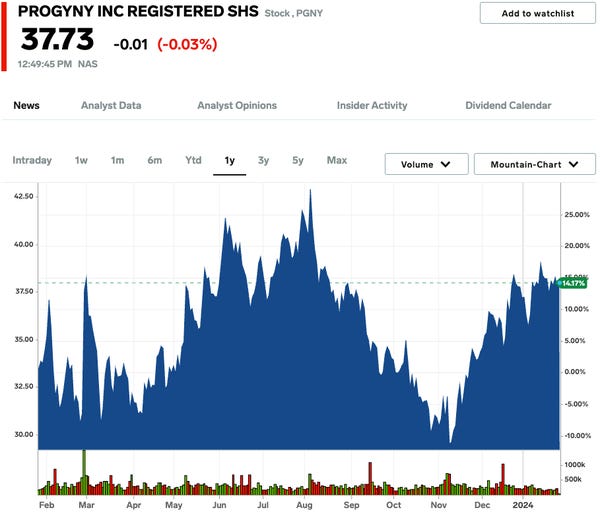The Rise Of Femicide: Exploring The Factors Contributing To The Increase

Table of Contents
Societal and Cultural Norms Perpetuating Femicide
Gender Inequality and Patriarchy
Patriarchal structures, which normalize male dominance and female subordination, are fundamentally linked to femicide. These deeply ingrained systems often legitimize violence against women, viewing them as subordinate beings whose lives hold less value than men's.
- Examples of patriarchal norms: Unequal inheritance laws, limited access to education and employment for women, cultural practices that condone wife-beating or honor killings.
- Statistics: Studies consistently show a strong correlation between high levels of gender inequality and increased rates of femicide. Countries with the most patriarchal systems often have the highest femicide rates.
- Cultural practices: Certain cultural practices, though often presented as tradition, directly contribute to femicide by normalizing violence against women and fostering a culture of impunity.
The Role of Traditional Gender Roles
Rigid gender roles significantly increase women's vulnerability to violence. When women are confined to the domestic sphere, economically dependent, and lacking social power, they become more susceptible to abuse and femicide.
- Harmful traditional gender roles: The expectation that women should be subservient to men, responsible solely for domestic duties, and silent about abuse.
- Economic independence and social standing: Women's economic dependence on men often prevents them from leaving abusive relationships, increasing their risk of femicide. Lack of social support networks further isolates them.
- Acceptance of violence: Traditional views often condone or minimize violence against women, creating an environment where femicide can occur with little social repercussions.
The Influence of Media and Popular Culture
Media portrayals of women and relationships play a significant role in shaping societal attitudes towards gender and violence. Harmful stereotypes and the normalization of violence in media can contribute to a climate where femicide is more likely to occur.
- Harmful stereotypes: The portrayal of women as objects of male desire, weak, or deserving of violence.
- Impact of violent media: Exposure to violent media can desensitize individuals to violence against women, potentially reducing empathy and increasing the acceptance of such acts.
- Perpetuation of misogynistic ideas: Popular culture, including music, movies, and video games, can often reinforce misogynistic ideas, contributing to the normalization of violence and disrespect towards women.
Legal and Institutional Failures in Addressing Femicide
Weak Enforcement of Laws Protecting Women
Even when laws exist to protect women from violence, weak enforcement severely undermines their effectiveness. Inadequate police response, insufficient judicial processes, and systemic biases within the justice system contribute to impunity for perpetrators of femicide.
- Examples of weak laws: Laws that don’t adequately address gender-based violence or that lack specific provisions for femicide.
- Underreporting and lack of prosecution: Many cases of violence against women go unreported, and even when reported, prosecutions are often rare due to lack of evidence, witness intimidation, or systemic biases.
- Systemic biases: Law enforcement and judicial systems often exhibit bias against women, failing to take their complaints seriously or adequately investigate allegations of abuse.
Gaps in Support Services for Victims
A lack of adequate support services further exacerbates the problem. Survivors of violence often lack access to safe shelters, counseling, and other essential resources.
- Lack of accessibility: Limited availability of shelters, especially in rural areas, insufficient funding for support services, and lack of culturally sensitive programs.
- Insufficient funding: Underfunding of support services means that many women cannot access the help they need to escape abusive situations.
- Need for trauma-informed care: Survivors of violence require specialized care that recognizes and addresses the trauma they have experienced.
Lack of Data Collection and Research on Femicide
Accurate data collection on femicide is crucial for effective policymaking. However, inconsistent definitions, underreporting, and lack of standardized data collection methods hinder our understanding of the true extent of the problem.
- Challenges in data collection: Different countries and regions use varying definitions of femicide, making it difficult to compare data across borders.
- Need for standardized definitions: Adopting a universally accepted definition of femicide is crucial for accurate data collection and effective international collaboration.
- Impact of data gaps: The lack of reliable data hinders policy-makers’ ability to design and implement effective interventions to prevent femicide.
Economic Factors Contributing to Femicide
Poverty and Economic Inequality
Poverty and economic hardship significantly increase the risk of violence against women. Economic stress can exacerbate existing tensions within relationships, limiting women's ability to leave abusive situations.
- Economic stress: Financial difficulties can increase the likelihood of conflict and violence in households.
- Inability to escape abusive relationships: Economic dependence often traps women in abusive relationships, making them more vulnerable to femicide.
- Correlation between poverty rates and femicide rates: Studies have shown a strong correlation between high poverty rates and increased rates of femicide.
Lack of Economic Opportunities for Women
Limited access to education, employment, and financial independence makes women more vulnerable to violence. Economic empowerment is crucial in preventing femicide.
- Impact of economic dependence: Women who lack financial independence are more reliant on their partners, making it harder to leave abusive situations.
- Need for economic empowerment programs: Investing in programs that support women's education, employment, and financial independence is essential in reducing their vulnerability to violence.
- Women’s financial autonomy and safety: A woman's financial independence directly correlates with her ability to escape abusive relationships and improve her safety.
Conclusion
The rise of femicide is a complex issue stemming from the interconnectedness of deeply ingrained societal norms, systemic legal failures, and persistent economic inequalities. Addressing this crisis requires a multifaceted approach that tackles gender inequality at its roots, strengthens legal frameworks and support services, and promotes women's economic empowerment. We must work together to combat femicide, prevent future tragedies, and build a world where women are safe and valued. Support organizations working to end gender-based violence, advocate for stronger legislation, and educate others about this critical issue. Let us all strive to end femicide and create a safer future for women everywhere. Learn more and get involved by visiting [link to relevant organization].

Featured Posts
-
 Appeal Pending Ex Tory Councillors Wife And Racial Hatred Tweet
May 21, 2025
Appeal Pending Ex Tory Councillors Wife And Racial Hatred Tweet
May 21, 2025 -
 Addressing Tariff Barriers Switzerland And Chinas Joint Appeal
May 21, 2025
Addressing Tariff Barriers Switzerland And Chinas Joint Appeal
May 21, 2025 -
 Tikkie Uw Gids Voor Probleemloos Bankieren In Nederland
May 21, 2025
Tikkie Uw Gids Voor Probleemloos Bankieren In Nederland
May 21, 2025 -
 Analyzing Qbts Stock Performance After The Next Earnings Release
May 21, 2025
Analyzing Qbts Stock Performance After The Next Earnings Release
May 21, 2025 -
 First Atp Title For Flavio Cobolli Bucharest Tournament Victory
May 21, 2025
First Atp Title For Flavio Cobolli Bucharest Tournament Victory
May 21, 2025
Latest Posts
-
 Mainzs Henriksen The Next Klopp Or Tuchel
May 21, 2025
Mainzs Henriksen The Next Klopp Or Tuchel
May 21, 2025 -
 Kaellmanin Ja Hoskosen Puolalaisjakso Paeaettyi
May 21, 2025
Kaellmanin Ja Hoskosen Puolalaisjakso Paeaettyi
May 21, 2025 -
 Mainz Henriksen Following In The Footsteps Of Klopp And Tuchel
May 21, 2025
Mainz Henriksen Following In The Footsteps Of Klopp And Tuchel
May 21, 2025 -
 Huuhkajat Kaksikko Kaellman Ja Hoskonen Palaavat Kotimaahan
May 21, 2025
Huuhkajat Kaksikko Kaellman Ja Hoskonen Palaavat Kotimaahan
May 21, 2025 -
 Fremantle Q1 Financial Results 5 6 Revenue Decrease Attributed To Budget Cuts
May 21, 2025
Fremantle Q1 Financial Results 5 6 Revenue Decrease Attributed To Budget Cuts
May 21, 2025
